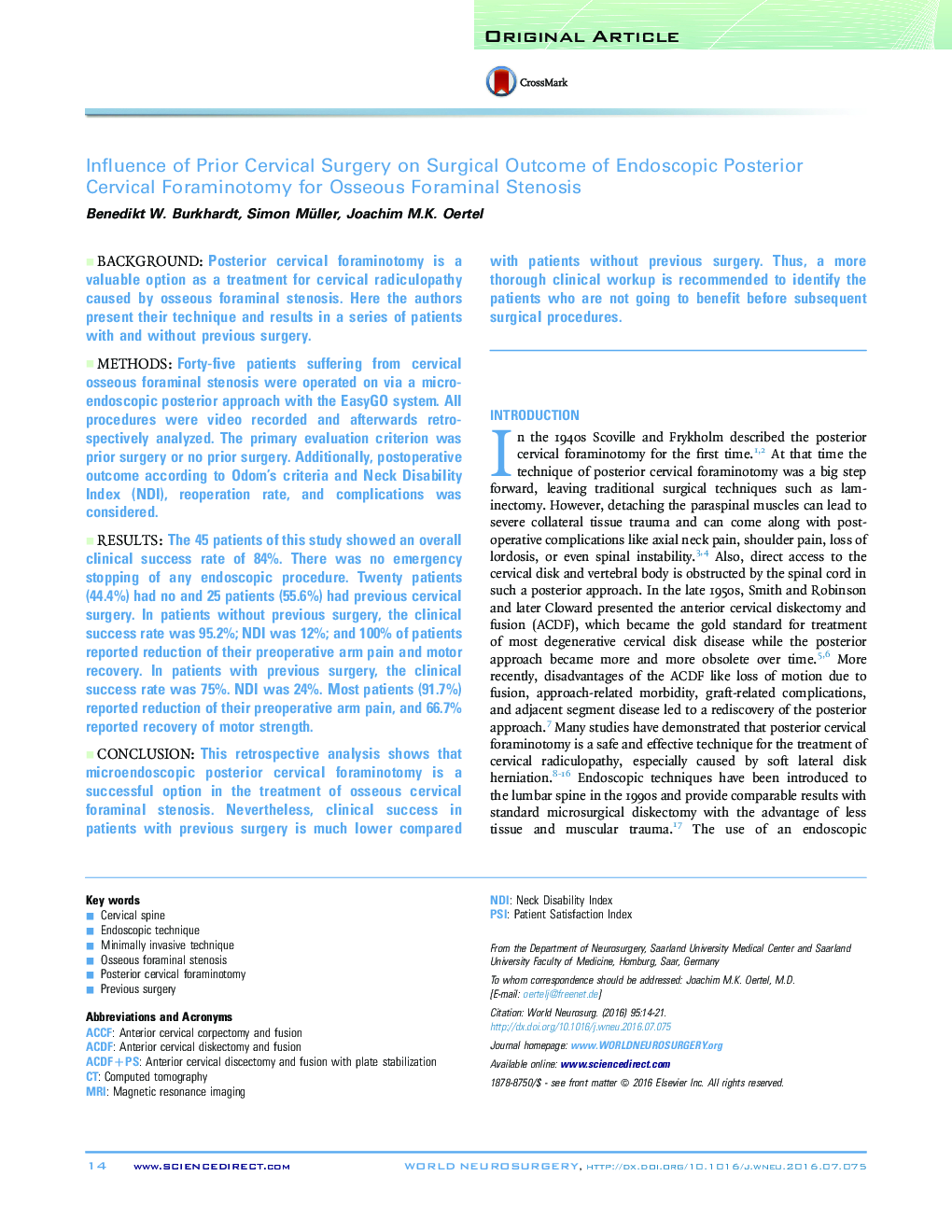| Article ID | Journal | Published Year | Pages | File Type |
|---|---|---|---|---|
| 6042972 | World Neurosurgery | 2016 | 8 Pages |
BackgroundPosterior cervical foraminotomy is a valuable option as a treatment for cervical radiculopathy caused by osseous foraminal stenosis. Here the authors present their technique and results in a series of patients with and without previous surgery.MethodsForty-five patients suffering from cervical osseous foraminal stenosis were operated on via a microendoscopic posterior approach with the EasyGO system. All procedures were video recorded and afterwards retrospectively analyzed. The primary evaluation criterion was prior surgery or no prior surgery. Additionally, postoperative outcome according to Odom's criteria and Neck Disability Index (NDI), reoperation rate, and complications was considered.ResultsThe 45 patients of this study showed an overall clinical success rate of 84%. There was no emergency stopping of any endoscopic procedure. Twenty patients (44.4%) had no and 25 patients (55.6%) had previous cervical surgery. In patients without previous surgery, the clinical success rate was 95.2%; NDI was 12%; and 100% of patients reported reduction of their preoperative arm pain and motor recovery. In patients with previous surgery, the clinical success rate was 75%. NDI was 24%. Most patients (91.7%) reported reduction of their preoperative arm pain, and 66.7% reported recovery of motor strength.ConclusionThis retrospective analysis shows that microendoscopic posterior cervical foraminotomy is a successful option in the treatment of osseous cervical foraminal stenosis. Nevertheless, clinical success in patients with previous surgery is much lower compared with patients without previous surgery. Thus, a more thorough clinical workup is recommended to identify the patients who are not going to benefit before subsequent surgical procedures.
